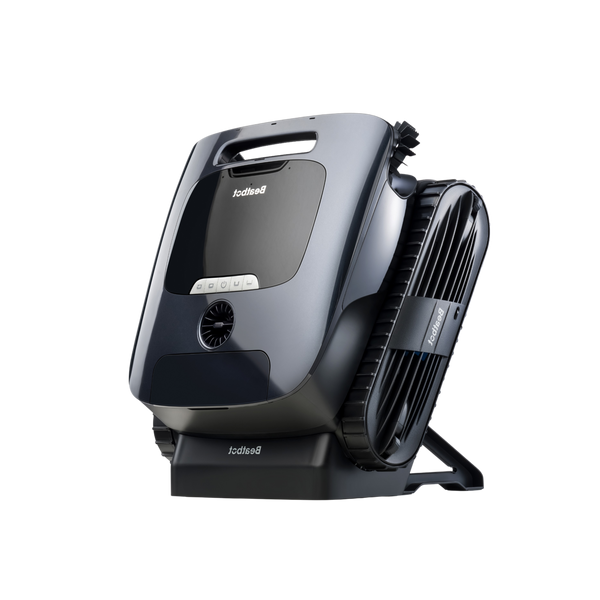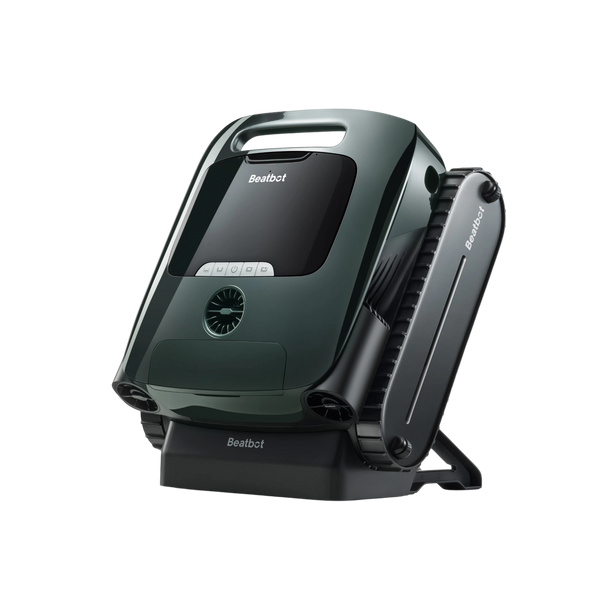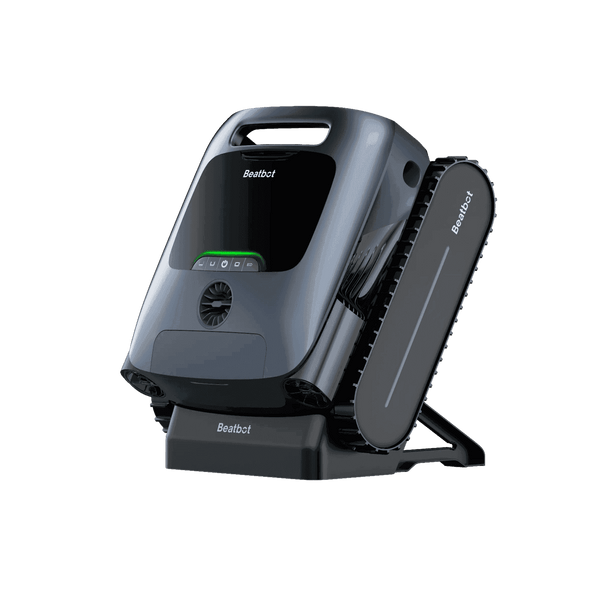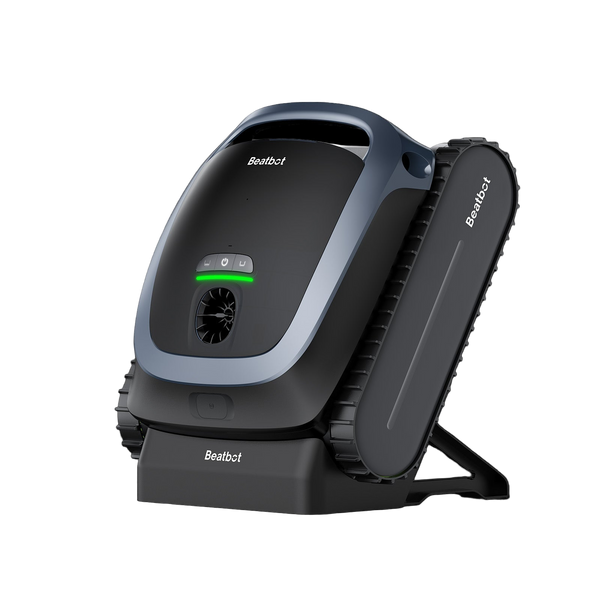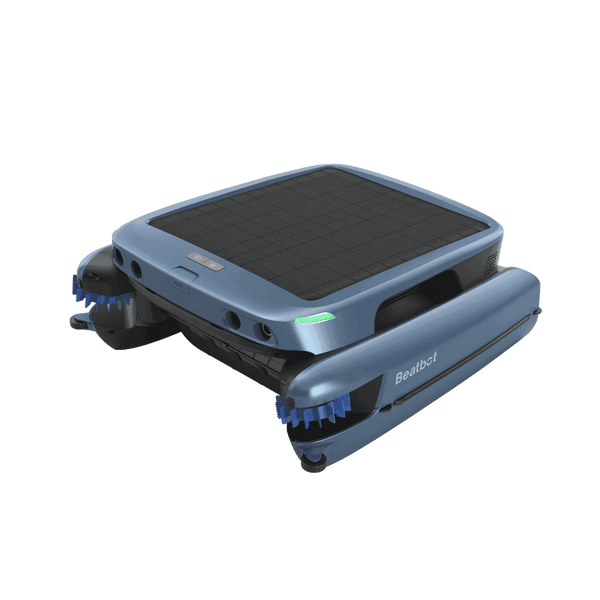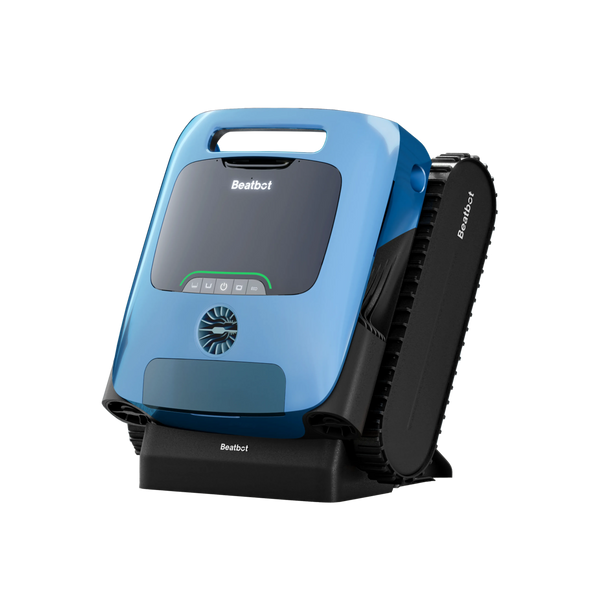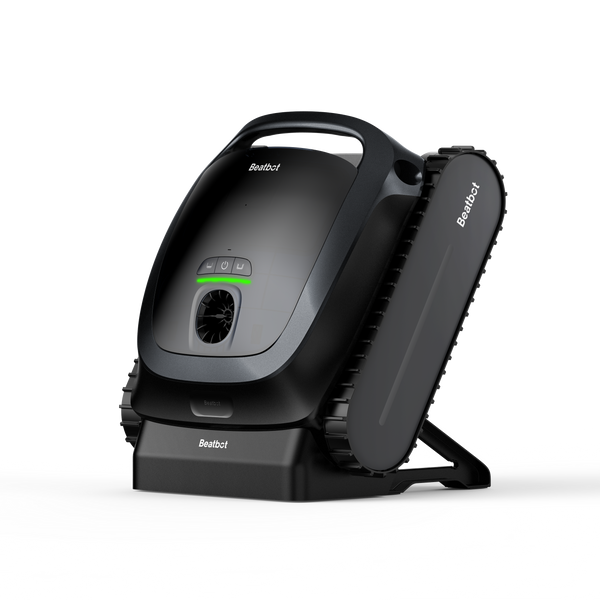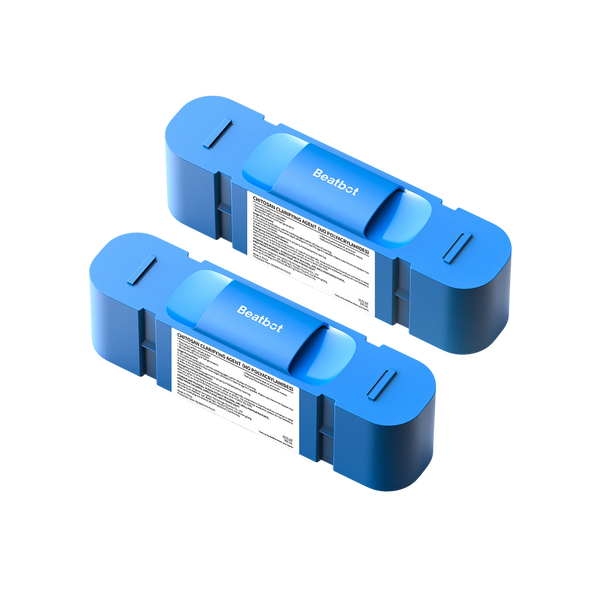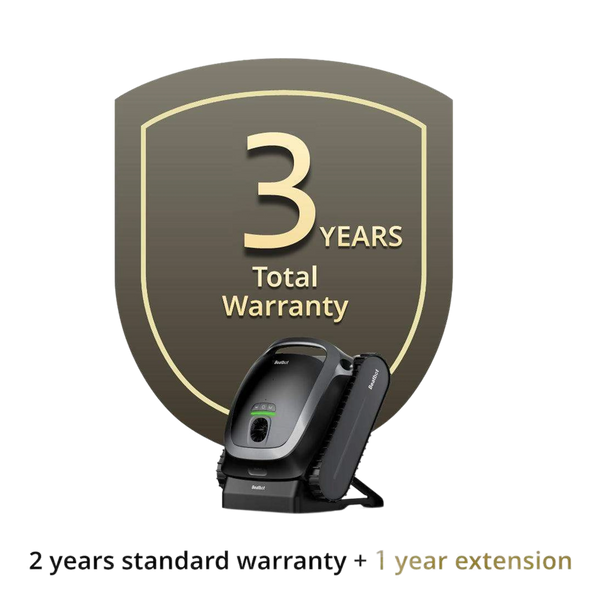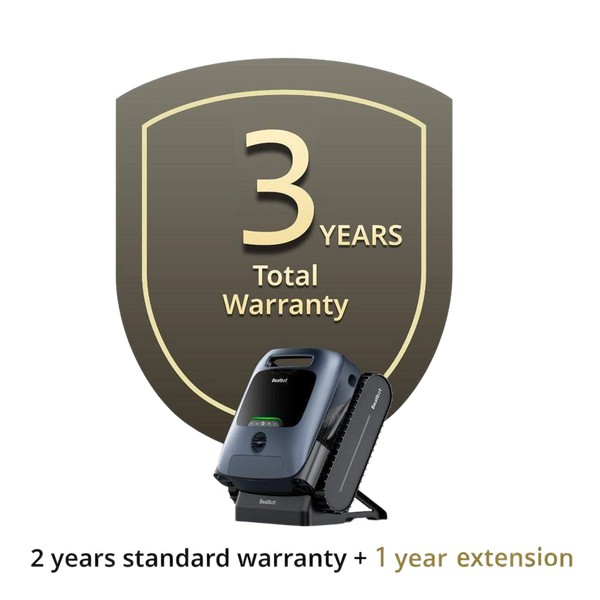Home > Blogs > Why is your pool water green but no algae? Beatbot brings a high-tech treatment solution.
Why is your pool water green but no algae? Beatbot brings a high-tech treatment solution.
2025-03-16
You've noticed it – your pool water has taken on a mysterious green tint, but despite careful inspection, you can't find any algae growth on the walls or floor. This confusing situation leaves many pool owners scratching their heads. Green water typically signals algae problems, but sometimes the culprit lies elsewhere. Understanding the various factors that can turn your water green without actual algae growth helps you address the real issue and restore your pool's crystal-clear appearance.
Several different chemical and environmental factors can create this deceptive green coloration. Metals in the water, imbalanced chemicals, or even microscopic particles can all contribute to the green appearance without forming the typical algae colonies you'd expect to see. Identifying which specific factor affects your pool requires some detective work but leads to more effective solutions than repeatedly treating for algae that isn't there.
Table of contents

Dissolved Metals: The Hidden Color Changers
One of the most common causes of green water without visible algae comes from dissolved metals, particularly copper. These metals enter your pool through various sources including fill water, corroded equipment, or even certain pool chemicals. When copper oxidizes in water, it creates a greenish tint similar to algae but without the characteristic slime or wall growth.
Well water contains naturally occurring metals that can affect pool color. If you've recently filled or topped off your pool with well water, this might explain the sudden color change. Even city water sometimes contains dissolved metals, though usually in lower concentrations than well water. Pool equipment with copper components, such as heat exchangers or certain pipes, can corrode over time and release metals into your water.
Certain pool chemicals, especially some algaecides, contain copper as an active ingredient. While these products effectively kill algae, they sometimes leave behind dissolved copper that tints water green. This creates the ironic situation where treatment for algae results in water that looks like it has algae, even though the actual organisms have been eliminated.
Chemical Imbalance Issues
Incorrect chemical balances often cause color changes in pool water. When pH levels drift too high (above 7.8), metals in the water become more likely to precipitate and cause coloration. High pH also reduces the effectiveness of chlorine, potentially allowing microscopic algae to begin developing without yet forming visible colonies on surfaces.
Total alkalinity plays a crucial role in maintaining proper pool chemistry. When alkalinity falls outside the ideal range (typically 80-120 ppm), it causes instability in other chemical parameters, particularly pH. This instability creates conditions where metals become more reactive and water clarity suffers. The resulting green tint might appear without any actual algae growth on pool surfaces.
Stabilizer levels (cyanuric acid) also affect water color and clarity. Too much stabilizer shields chlorine molecules, preventing them from working effectively. This condition, called "chlorine lock," allows microscopic organisms to survive in the water, potentially creating a greenish haze even though visible algae hasn't yet formed.
Microscopic Algae: Too Small to See Individually
Sometimes your pool does contain algae, but not in the form you expect. Microscopic algae suspended in water can create green coloration without forming the characteristic surface growth. These tiny organisms remain suspended rather than attaching to surfaces, creating what appears to be clear green water.
This suspended algae typically indicates an early stage problem before the organisms have had time to multiply and colonize surfaces. The water looks green because millions of microscopic algae float freely, yet no visible growth appears on walls or floors. Testing the water reveals the presence of these organisms even though they're invisible to the naked eye.
I've seen this situation resolved quickly using the Beatbot AquaSense 2 Ultra. Its advanced filtration system captures these microscopic particles as small as 2 microns – far smaller than most pool cleaners can manage. When I deployed the AquaSense Pro in a pool with this suspended algae issue, the water clarity improved dramatically within hours as these tiny organisms were physically removed from the water.
Pollen and Environmental Factors
Seasonal factors like pollen can turn pool water green without introducing algae. During spring and early summer, many plants release massive amounts of pollen that can settle on water surfaces. This yellow-green dust dissolves partially in water, creating a greenish tint that mimics algae.
Heavy rainstorms wash environmental contaminants into pools, including tannins from leaves and organic matter. These tannins create yellow-brown discolorations that, when combined with the blue of pool water, can appear green. Unlike algae, these contaminants don't grow or multiply but remain in the water until removed through filtration or chemical treatment.
Construction dust and other airborne particles sometimes contain compounds that dissolve in water and create color changes. Pools near construction sites or in areas with significant air pollution may experience this issue more frequently than others. These particles typically remain suspended in the water rather than growing on surfaces.
Filtration System Problems
Poor filtration frequently causes green water without actual algae growth. When filtration systems operate inefficiently, microscopic particles remain suspended in the water, creating cloudiness and discoloration. This situation commonly occurs with clogged or dirty filters, inadequate filtration run times, or undersized equipment for the pool volume.
Cartridge filters require regular cleaning to maintain effectiveness. When cartridges become clogged with debris, water bypasses proper filtration, leaving contaminants in the pool. Sand filters may develop channeling where water creates paths of least resistance through the sand bed, reducing filtration effectiveness. DE filters can develop similar problems when grids become coated with oils or minerals.
Run time also impacts water clarity significantly. Most pools require at least 8-12 hours of filtration daily during warm weather to maintain proper clarity. Insufficient run time allows particles to remain suspended rather than being captured in the filter, creating conditions where water appears green despite adequate chlorine levels.
Testing and Diagnosis Methods
Proper testing helps identify the true cause of green water. Start with standard pool testing for free chlorine, combined chlorine, pH, and total alkalinity. If these parameters appear normal yet water remains green, additional testing becomes necessary. Metal test kits specifically designed for swimming pools can detect copper, iron, and manganese that might cause discoloration.
The phosphate test provides another valuable diagnostic tool. High phosphate levels indicate potential nutrient sources for algae but can also suggest other contaminants in the water. Since phosphates bind with metals, high readings might indicate dissolved metals rather than algae food sources.
Collect a water sample in a clear glass container and let it sit undisturbed for 24 hours. Observe whether particles settle to the bottom (indicating suspended matter) or if the water remains uniformly green (suggesting dissolved metals or chemical issues). This simple test helps distinguish between different potential causes.
Effective Solutions for Non-Algae Green Water
Metal Removal Treatments
When metals cause green discoloration, metal sequestrants or chelating agents provide the solution. These chemicals bind to dissolved metals, preventing them from causing discoloration and eventually allowing them to be removed through filtration. Most pool supply stores carry these products specifically designed for metal problems.
Apply sequestrant according to product directions, typically based on pool volume. After application, run the filtration system continuously for at least 24-48 hours to help remove the bound metals. Some sequestrants work gradually over several days, so patience may be necessary. For severe metal problems, partial water replacement sometimes becomes necessary alongside chemical treatment.
I found the Beatbot AquaSense 2 Ultra particularly effective at complementing this chemical approach. Its advanced filtration system physically removes the metal-sequestrant complexes from the water much more efficiently than standard pool filters. The Ultra 's 27 advanced sensorsallows it to navigate methodically throughout the entire pool, ensuring comprehensive cleaning coverage that traditional cleaners simply can't match.

Chemical Balance Correction
For chemical imbalance issues, systematic correction restores proper water chemistry. Start with adjusting total alkalinity to the ideal range (80-120 ppm) before addressing pH issues. This sequence matters because alkalinity acts as a buffer for pH, making subsequent adjustments more stable. After establishing proper alkalinity, adjust pH to the ideal range of 7.2-7.6.
If stabilizer levels (cyanuric acid) exceed 100 ppm, partial water replacement helps reduce concentration. No chemical effectively removes cyanuric acid from water, so dilution provides the only practical solution. Replace enough water to bring levels back within the ideal range of 30-50 ppm.
Shock treatment with non-chlorine shock can help clear water affected by organic contaminants without adding more chlorine to an already stabilizer-rich environment. These oxidizing products break down organic matter without contributing to cyanuric acid levels, helping restore water clarity without worsening chemical imbalances.
Prevention Strategies
Preventing green water starts with regular maintenance and proper chemical management. Test water at least twice weekly during warm weather and adjust chemicals promptly when readings drift from ideal ranges. Maintain consistent chlorine levels between 1-3 ppm to prevent microscopic organisms from developing.
Filter maintenance plays a crucial role in prevention. Clean or backwash filters according to manufacturer recommendations and equipment performance. Replace filter media (sand, DE, cartridges) according to recommended schedules to maintain optimal filtration efficiency. Consider upgrading undersized filtration systems that struggle to maintain water clarity.
Use a quality pool cover when the pool remains unused for extended periods. Covers reduce contamination from environmental sources like pollen, dust, and leaves while also limiting chemical loss through evaporation and UV degradation. This simple step significantly reduces the factors that contribute to green water problems.
When to Seek Professional Help
Despite your best efforts, some situations require professional intervention. Consider contacting a pool professional if:
- Water remains green after properly addressing chemical balances
- Metal tests show extremely high levels beyond what consumer products can address
- You suspect equipment problems contributing to water quality issues
- Repeated treatments fail to resolve the problem
Pool professionals bring specialized testing equipment and expertise to diagnose complex water quality issues. They can perform comprehensive water analysis beyond what home test kits provide and often identify problems missed in routine testing. Their experience with similar situations helps them recognize patterns that point to specific causes and solutions.
For complex water chemistry issues, professional-grade treatments often resolve problems more effectively than consumer products. These treatments, combined with expert application, address underlying issues rather than merely treating symptoms. The investment in professional help often saves money compared to repeated unsuccessful treatments and associated frustration.
Long-term Water Quality Management
Maintaining crystal-clear pool water requires consistent attention to multiple factors. Develop a regular maintenance schedule including chemical testing, filter cleaning, and equipment checks. Document readings and treatments to identify patterns or recurring issues before they become serious problems.
Consider installing a mineral purification system to complement traditional sanitizers. These systems use minerals like silver and zinc to reduce microorganism growth with less reliance on chemical sanitizers. They often help maintain clearer water with fewer chemical fluctuations.
Automatic chemical controllers provide another valuable tool for maintaining consistent water chemistry. These devices continuously monitor parameters like pH and chlorine levels, automatically adjusting chemical feeders to maintain ideal ranges. While initially more expensive than manual testing and treatment, they often deliver superior results through consistent chemical management.
With proper understanding and systematic approach, you can solve the mystery of green water without algae and enjoy crystal-clear pool water throughout the swimming season.
